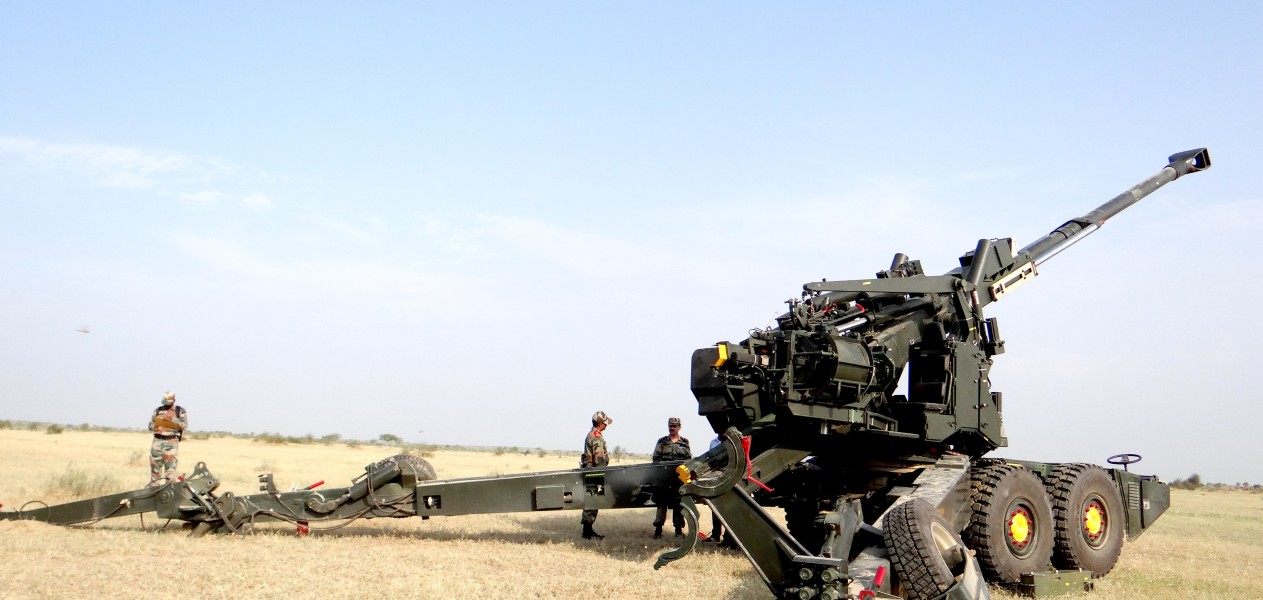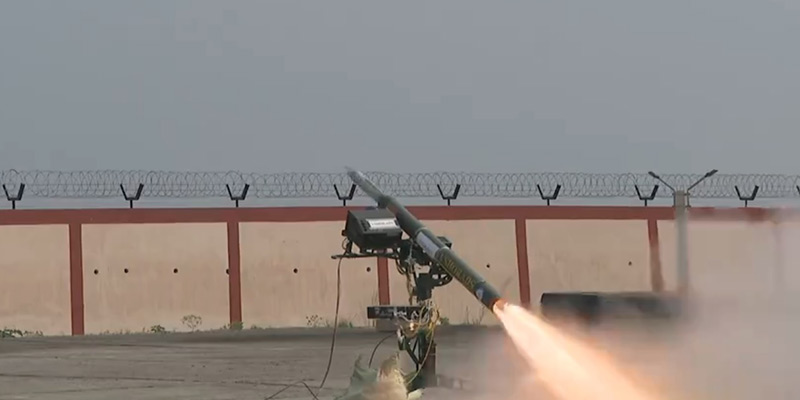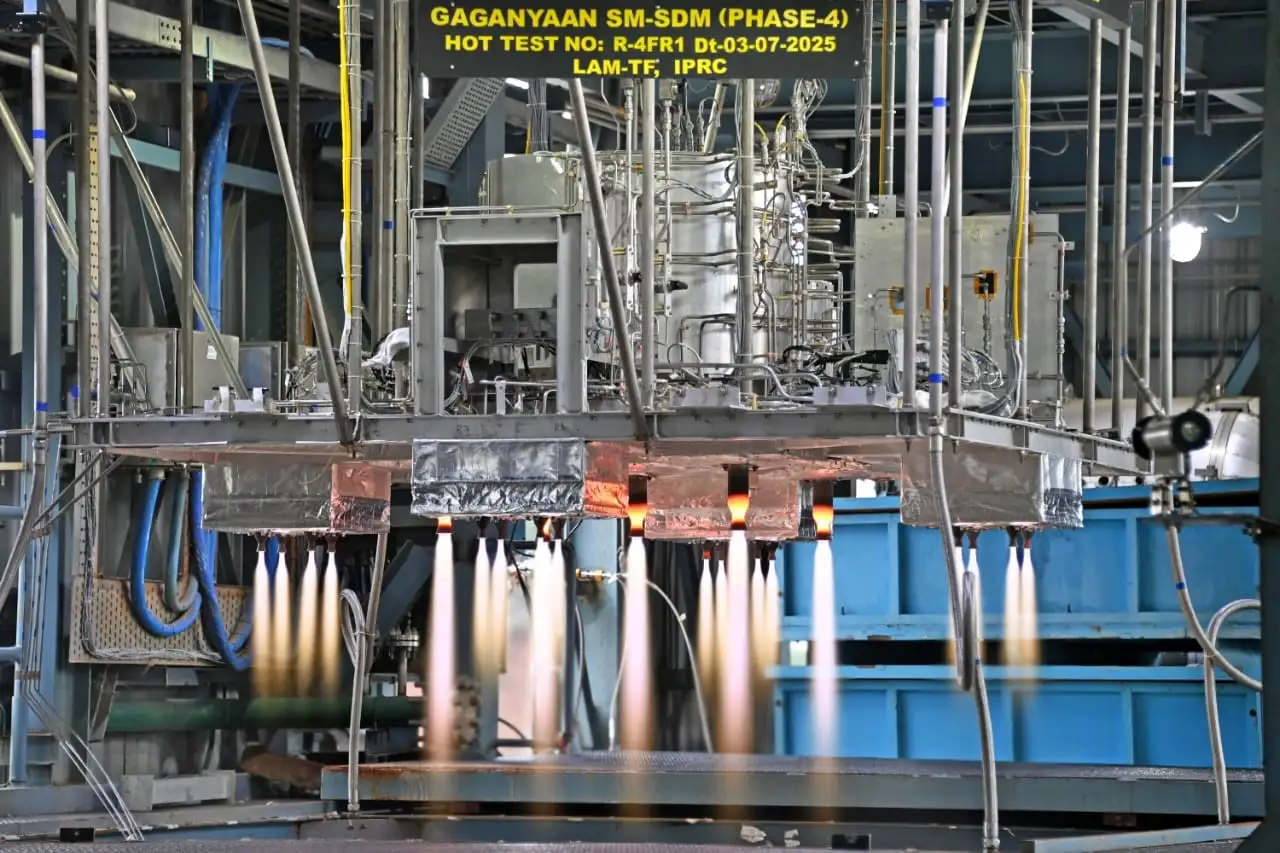SOURCE: IDRW.ORG

The Indian Army’s ambitious plan to enhance its artillery capabilities with long-range indigenous systems is progressing rapidly, with the Advanced Towed Artillery Gun System (ATAGS) nearing a critical milestone. According to RP Pandey, Project Director of ATAGS, the first gun system is primed for its mandatory “first of product model test,” a pivotal step toward operational deployment. Speaking to The New Indian Express, Pandey confirmed that the Army’s first regiment, comprising 18 ATAGS, is slated for induction within a year of the test’s completion, targeting February 2027.
In a significant boost to India’s self-reliance in defense manufacturing, the Ministry of Defence (MoD) in March 2025 inked contracts worth approximately ?6,900 crore for the procurement of 307 ATAGS 155mm/52 calibre guns and 327 high-mobility 6×6 gun towing vehicles. The ATAGS will be supplied by Bharat Forge Limited, while Tata Advanced Systems Limited will deliver the towing vehicles, reinforcing the ‘Make in India’ initiative.
Continue readingSOURCE: IDRW.ORG

In a significant boost to India’s indigenous defense technology ecosystem, Sagar Defence Engineering Pvt. Ltd. has secured a Transfer of Technology (ToT) agreement with the Centre for Development of Advanced Computing (C-DAC) for an advanced Acoustic Gunshot Detection System. The agreement was formalized during TecVerse 2025, a two-day technology showcase organized by the Ministry of Electronics and Information Technology (MeitY) on June 27–28, 2025, in New Delhi. This collaboration marks a milestone in integrating cutting-edge deep-tech solutions into India’s defense and security framework, aligning with the Atmanirbhar Bharat initiative.
The Acoustic Gunshot Detection System, originally developed by C-DAC in collaboration with the Defence Research and Development Organisation’s (DRDO) Armament Research and Development Establishment (ARDE) in Pune, is a sophisticated instrument designed to pinpoint the direction of gunfire with high precision. According to a 2019 report, a pilot model of the system was handed over to ARDE in 2015, with ongoing development to enhance its range and capabilities. The system operates on acoustic principles, filtering gunshot sounds from ambient noise within 20 milliseconds and identifying the origin of the shot with a current range of up to 300 meters.
Continue readingSOURCE: AFI

Hindustan Aeronautics Limited (HAL) has reached a significant milestone in India’s indigenous fighter jet program, with recent images showcasing the 9th Tejas Mk1A aircraft, bearing tail number LA-5041, signaling its readiness for delivery to the Indian Air Force (IAF). This development, reported by Indian Defence Research Wing (idrw.org), confirms HAL’s progress toward delivering 12 Tejas Mk1A jets by the end of 2025 to raise the IAF’s first dedicated squadron of this advanced 4.5-generation fighter.
Additionally, three more aircraft—LA-5042, LA-5043, and LA-5044—are in advanced stages of development at HAL’s Nashik facility, with 10 Tejas Mk1A jets slated to roll out by the end of July 2025. This ramp-up underscores HAL’s commitment to bolstering the IAF’s combat capabilities and advancing India’s self-reliance under the Atmanirbhar Bharat initiative.
Continue readingSOURCE: AFI

Dr. P. K. Mishra, Principal Secretary to the Hon’ble Prime Minister, visited the facilities of Hindustan Aeronautics Limited (HAL) in Bengaluru, underscoring the government’s focus on strengthening India’s aerospace and defense capabilities. The visit included a detailed tour of key HAL divisions, highlighting the progress of indigenous defense programs critical to national security.
Dr. Mishra began his visit at the Aircraft Research & Design Centre (ARDC), where he toured the hangar dedicated to the Light Combat Aircraft (LCA) Mk 2, an advanced variant of the indigenous Tejas fighter jet. The LCA Mk 2, designed to enhance the Indian Air Force’s combat capabilities with improved range, payload, and avionics, is a flagship project under the ‘Make in India’ initiative. Dr. Mishra was briefed on the ongoing development and technological advancements of the aircraft, which is poised to play a pivotal role in India’s air defense strategy.
Continue readingSOURCE: AFI

India’s quest to modernize its air force has placed the Indian Air Force (IAF) at a critical juncture, balancing the acquisition of advanced fighter jets with the imperatives of cost, capability, and self-reliance. The ongoing Multi-Role Fighter Aircraft (MRFA) tender for 114 fighter jets, with Dassault Aviation’s Rafale as a leading contender, is a cornerstone of this modernization effort.
However, the potential induction of two to three squadrons (36–54 aircraft) of fifth-generation fighter jets, such as the Lockheed Martin F-35 or the indigenous Advanced Medium Combat Aircraft (AMCA), could significantly reshape Dassault’s prospects, potentially slashing the Rafale order by 50%. This strategic pivot would reflect India’s evolving defense priorities, regional security dynamics, and the push for technological superiority, with profound implications for Dassault’s $10–14 billion MRFA contract.
Continue readingSOURCE: AFI

India’s Long-Range Land Attack Cruise Missile (LR-LACM), unveiled by the Defence Research and Development Organisation (DRDO) at the Defence Exhibition Athens (DEFEA) 2025 in May, has captured the attention of several European NATO member states seeking alternatives to the U.S.-made Tomahawk cruise missile.
With a subsonic speed and an impressive range of 1,000 km, the LR-LACM offers a NATO-compatible, cost-effective solution for long-range precision strikes, prompting interest from countries looking to reduce dependence on U.S. systems, which are often sold with restricted ranges. While Greece has emerged as a key potential partner, with preliminary talks underway, India’s ongoing efforts to scale up production and complete domestic induction may delay potential deals, even as the missile’s NATO-standard design positions it as a game-changer in Europe’s defense landscape.
Continue readingSOURCE: AFI

In a significant step toward enhancing the Indian Navy’s air defense capabilities, the Defence Research and Development Organisation (DRDO) has embarked on a crucial phase of Project P044, aimed at integrating the Very Short Range Air Defence System (V-SHORADS) onto naval warships. The DRDO has initiated the process of acquiring a Stabilized Launch Mechanism System (SLMS) for V-SHORADS, which will be installed on a naval vessel for trials, marking a pivotal advancement in India’s indigenous defense technology.
The V-SHORADS is a cutting-edge, indigenously developed air defense system designed to neutralize low-altitude aerial threats, including drones, helicopters, and fighter aircraft, at very short ranges. Tailored for rapid response and high precision, the system is a critical asset for protecting naval platforms from modern aerial threats, such as anti-ship missiles and unmanned aerial vehicles (UAVs). The integration of V-SHORADS onto warships will significantly enhance the Indian Navy’s ability to safeguard its vessels in contested maritime environments, particularly in the Indo-Pacific region, where geopolitical tensions are on the rise.
Continue readingSOURCE: IAF

An IAF Jaguar Trainer aircraft met with an accident during a routine training mission and crashed near Churu in Rajasthan, today. Both pilots sustained fatal injuries in the accident. No damage to any civil property has been reported.
IAF deeply regrets the loss of lives and stands firmly with the bereaved families in this time of grief. A court of inquiry has been constituted, to ascertain the cause of the accident.
Continue readingSOURCE: IANS

INS Surat, India’s advanced stealth-guided missile destroyer, played a significant role during the recently conducted ‘Operation Sindoor’ while being deployed in the Arabian Sea, revealed its commanding officer, Captain Sandeep Shorey, on Wednesday. Designed to dominate across all dimensions of naval warfare – surface, air, and underwater – INS Surat stands as a symbol of India’s growing maritime strength and indigenous defence capabilities. Commissioned in January 2025 by Prime Minister Narendra Modi at the Naval Dockyard in Mumbai, this powerful warship is named after the historic port city of Surat in Gujarat.
Speaking to IANS, Captain Shorey highlighted the warship’s capabilities: “The salient feature of INS Surat is that it’s a true multi-role destroyer. It can detect, classify, and neutralise enemy targets – whether in the air, on the surface, or underwater.
Continue readingSOURCE: TASL

Honoured to host the Ambassador of His Majesty the King of Morocco to India, His Excellency Mr Mohamed Maliki and the Defence Attache – Embassy of the Kingdom of Morocco in India, Col Abdelmajid Zeroual, at our facility, where they interacted with employees from TAS* Maroc undergoing training on TATA WhAP 8×8.
A proud moment as India and Morocco deepen defence ties through skill, tech, and collaboration.
Continue readingSOURCE: PTI

China’s mega dam being built near the Arunachal Pradesh border will be a ticking “water bomb”, an existential threat and a bigger issue than anything else apart from the military threat, the state’s Chief Minister Pema Khandu has said.
In an interview with PTI Videos on Tuesday, Mr Khandu said the world’s largest dam project on the Yarlung Tsangpo river, the Tibetan name for Brahmaputra, is a matter of grave concern as China is not a signatory to the international water treaty that could have forced it to abide by international norms.
Continue readingSOURCE: ISRO

ISRO successfully conducted two hot tests of the Gaganyaan Service Module Propulsion System (SMPS) on July 03, 2025 at ISRO Propulsion Complex (IPRC), Mahendragiri.
Two short duration hot tests were conducted for 30s and 100s to validate the test article configuration. The overall performance of the propulsion system during these hot tests was normal as per pre-test predictions. During the 100s test, simultaneous operation of all RCS thrusters in different modes (steady state; pulsed) along with all LAM engines was also successfully demonstrated.
Continue readingSOURCE: PTI
)
Turkish Foreign Minister Hakan Fidan and Defence Minister Yasir Guler are in Pakistan to hold talks with Prime Minister Shehbaz Sharif on issues of mutual interest, including defence industry cooperation. The two arrived at Islamabad on Wednesday (July 9, 2025) on an official visit.
Radio Pakistan reported that during their official engagements, important issues of mutual interest will be discussed. “The visit reflects the close and brotherly ties between Pakistan and Turkiye, rooted in shared history, culture, and mutual trust,” it reported.
Continue readingSOURCE: PTI

US Secretary of State Marco Rubio said that under President Donald Trump’s leadership, America “prevented and ended” a war between India and Pakistan. “Just going through a list here Mr President…and all these achievements that have happened domestically.…Under your leadership, we’ve prevented and ended a war between India and Pakistan,” Rubio said, sitting next to Trump, during remarks at a Cabinet meeting at the White House Tuesday.
Rubio also listed the peace deal between the Democratic Republic of the Congo and Rwanda, “a 12-day war that ended with an American operation that we’re the only country in the world that could have done, hopefully pretty soon a peace deal between Azerbaijan and Armenia.” “The entire Middle East and the infrastructure of it has the potential now to change because of Syria and Lebanon. And it hasn’t even been 6 months. It’s a great testament to your leadership” and the team, he said.
Continue readingSOURCE: PTI

Arunachal Pradesh Chief Minister Pema Khandu has said the Dalai Lama should be honoured with the Bharat Ratna, adding that he will write to the central government to recommend India’s highest civilian award for the Tibetan spiritual leader.
In an interview with PTI Videos on Tuesday, Mr Khandu also said that Beijing has no locus standi in the selection of the next Dalai Lama since Tibetan Buddhism is not even practised in mainland China unlike in Tibet and the Himalayan regions of India.
Continue reading